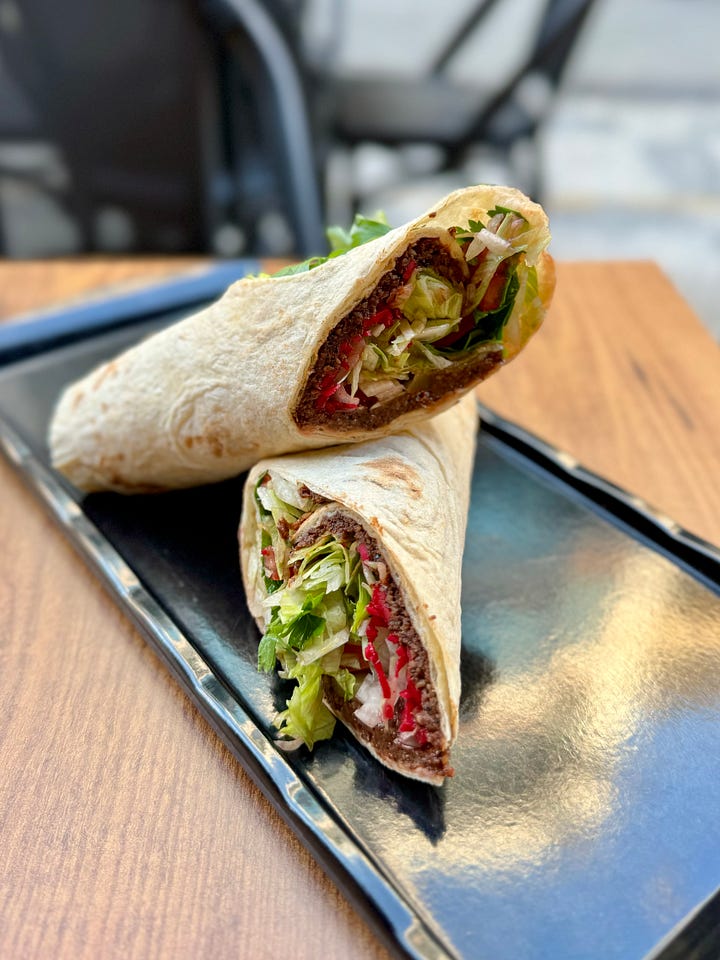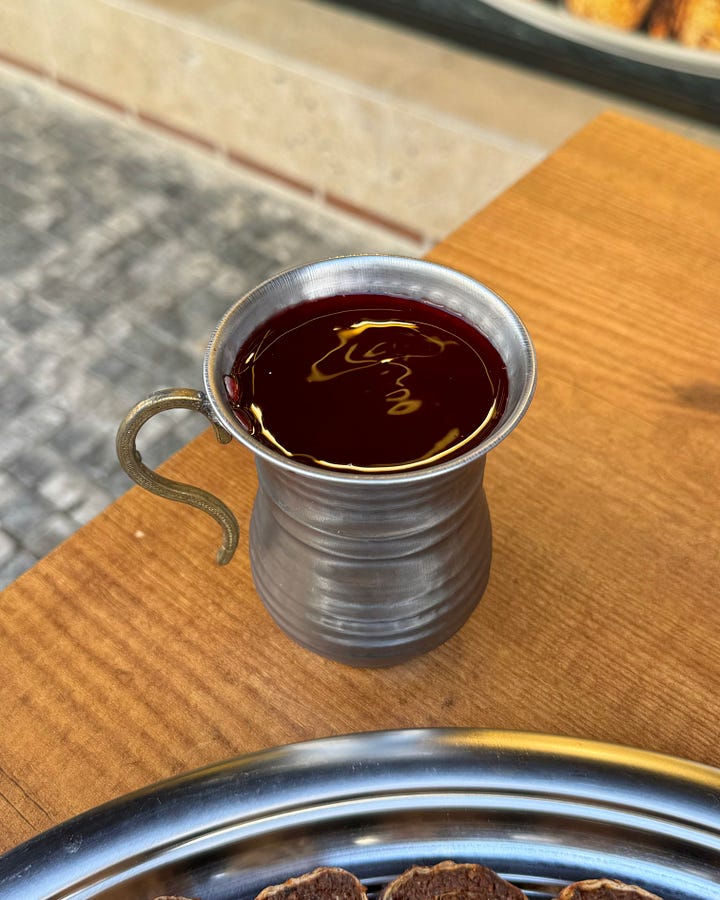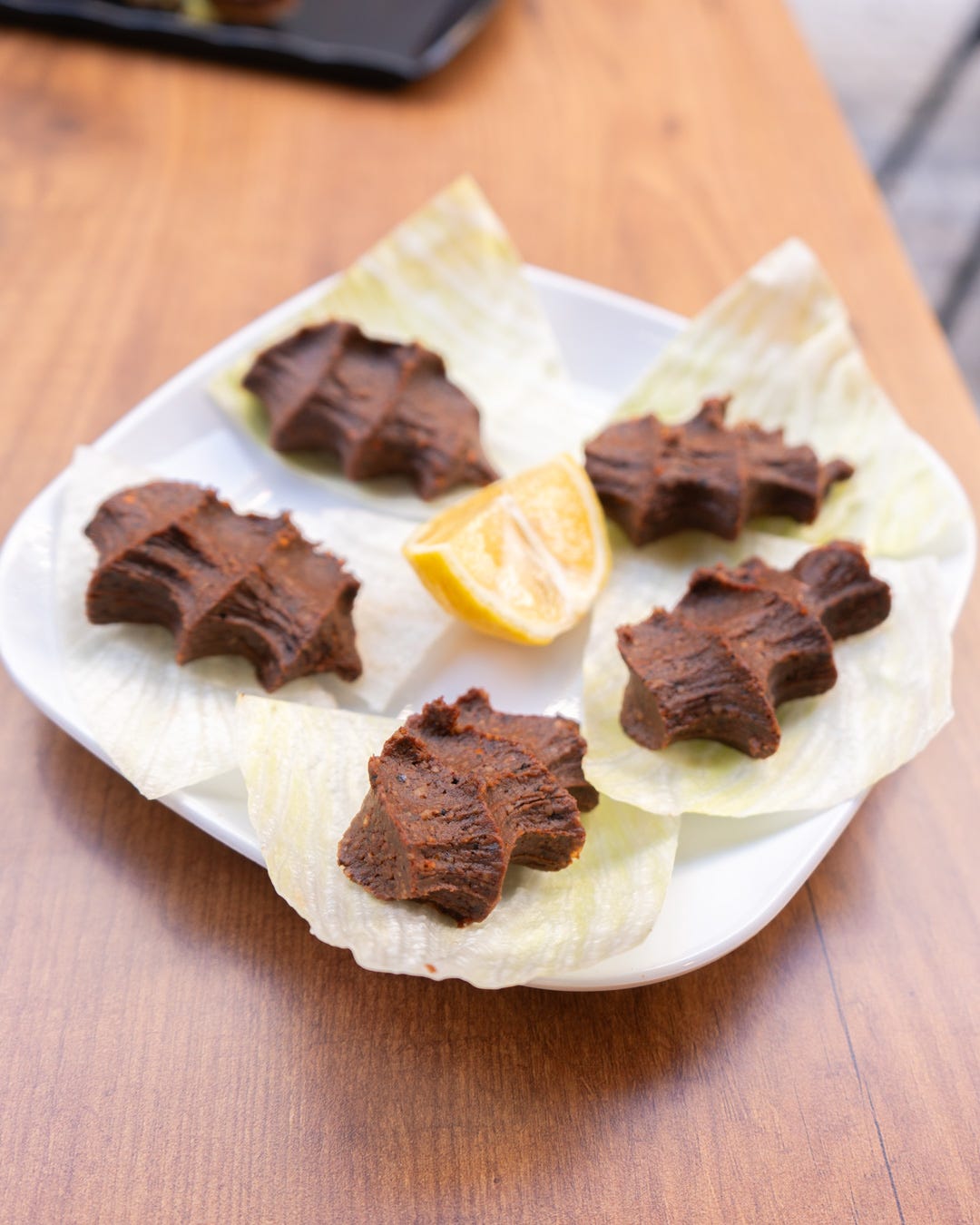On my quest to find traditional dishes from around the world that just happen to be vegan, I’ve noticed a fascinating pattern. Time and again, the stories behind these recipes are shaped by three forces: religion, poverty and regional differences. For millennia, people either fasted devoutly, couldn’t afford animal-based products, or simply didn’t have access to meat, dairy or eggs in their local climate. I dive deeper into this fascinating part of our food evolution in my book Naturally Vegan.
But when it comes to Çiğ Köfte, the story took a different turn. This iconic Turkish dish was originally made with raw meat—until 2008, when the Turkish Health Ministry banned the use of raw meat due to health concerns. Since then, most vendors started using a mixture of bulgur and walnuts instead. A word of caution: some chefs, and plenty of home cooks, still bend the rules. So, if you’re on a plant-based diet, it’s wise to ask how your Çiğ Köfte is prepared before ordering.
My Çiğ Köfte experience in Türkiye
During my visit to İstanbul, Ömer Usta taught me how this reimagined street food is prepared at his restaurant, Çiğköfte Dükkanı. The traditional method is labour-intensive and relies on a special Çiğ Köfte tray. The bulgur mixture is kneaded for about an hour, worked rhythmically over the tray’s rigid pattern to gradually break it down and soften it—a process that also makes the bulgur easier to digest. At home, I use a simple shortcut where I soak the bulgur in a bit of hot water before blending it with the rest of the ingredients.
Here’s a sneak peek of how he mixes it, the traditional way.
But the most joyful part of Çiğ Köfte is how it is traditionally eaten. Place one on a lettuce leaf, drizzle it with plenty of lemon juice and tuck in for a Turkish flavour explosion with punchy spices, tangy lemon and the freshness of the crunchy lettuce. Sensational!
It’s also common to find the paste spread generously on flatbreads, topped with fresh salad and pickles and rolled into a dürüm—a perfect, handheld street food. To take it to the next level, ask for a glass of turnip pickling juice called şalgam suyu, which makes a wonderful companion with its own sharp yet refreshing kick.


For the full visit to Çiğköfte Dükkanı, watch my İstanbul episode here:
And now for the recipe. Here’s how to make it…






